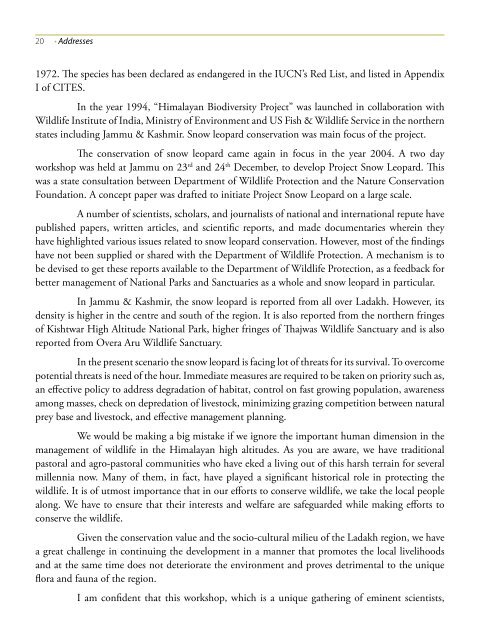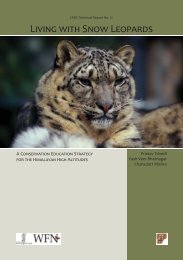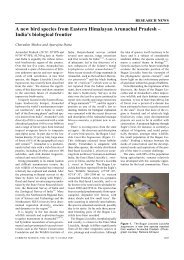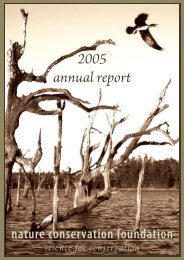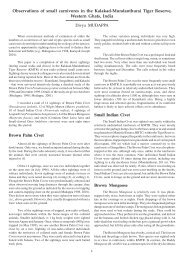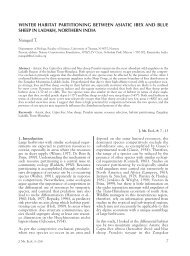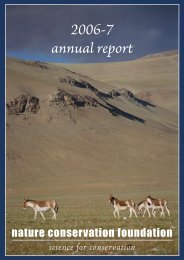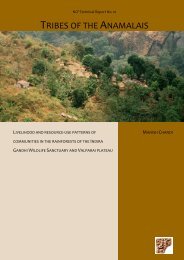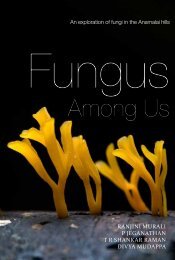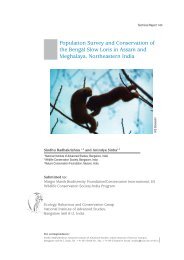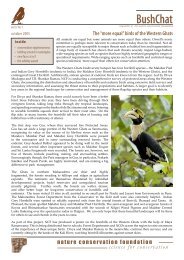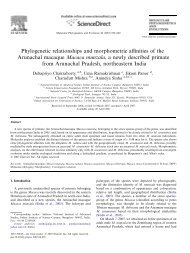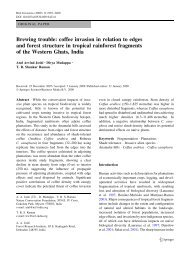towards project snow leopard - Nature Conservation Foundation
towards project snow leopard - Nature Conservation Foundation
towards project snow leopard - Nature Conservation Foundation
You also want an ePaper? Increase the reach of your titles
YUMPU automatically turns print PDFs into web optimized ePapers that Google loves.
20 • Addresses<br />
1972. The species has been declared as endangered in the IUCN’s Red List, and listed in Appendix<br />
I of CITES.<br />
In the year 1994, “Himalayan Biodiversity Project” was launched in collaboration with<br />
Wildlife Institute of India, Ministry of Environment and US Fish & Wildlife Service in the northern<br />
states including Jammu & Kashmir. Snow <strong>leopard</strong> conservation was main focus of the <strong>project</strong>.<br />
The conservation of <strong>snow</strong> <strong>leopard</strong> came again in focus in the year 2004. A two day<br />
workshop was held at Jammu on 23 rd and 24 th December, to develop Project Snow Leopard. This<br />
was a state consultation between Department of Wildlife Protection and the <strong>Nature</strong> <strong>Conservation</strong><br />
<strong>Foundation</strong>. A concept paper was drafted to initiate Project Snow Leopard on a large scale.<br />
A number of scientists, scholars, and journalists of national and international repute have<br />
published papers, written articles, and scientific reports, and made documentaries wherein they<br />
have highlighted various issues related to <strong>snow</strong> <strong>leopard</strong> conservation. However, most of the findings<br />
have not been supplied or shared with the Department of Wildlife Protection. A mechanism is to<br />
be devised to get these reports available to the Department of Wildlife Protection, as a feedback for<br />
better management of National Parks and Sanctuaries as a whole and <strong>snow</strong> <strong>leopard</strong> in particular.<br />
In Jammu & Kashmir, the <strong>snow</strong> <strong>leopard</strong> is reported from all over Ladakh. However, its<br />
density is higher in the centre and south of the region. It is also reported from the northern fringes<br />
of Kishtwar High Altitude National Park, higher fringes of Thajwas Wildlife Sanctuary and is also<br />
reported from Overa Aru Wildlife Sanctuary.<br />
In the present scenario the <strong>snow</strong> <strong>leopard</strong> is facing lot of threats for its survival. To overcome<br />
potential threats is need of the hour. Immediate measures are required to be taken on priority such as,<br />
an effective policy to address degradation of habitat, control on fast growing population, awareness<br />
among masses, check on depredation of livestock, minimizing grazing competition between natural<br />
prey base and livestock, and effective management planning.<br />
We would be making a big mistake if we ignore the important human dimension in the<br />
management of wildlife in the Himalayan high altitudes. As you are aware, we have traditional<br />
pastoral and agro-pastoral communities who have eked a living out of this harsh terrain for several<br />
millennia now. Many of them, in fact, have played a significant historical role in protecting the<br />
wildlife. It is of utmost importance that in our efforts to conserve wildlife, we take the local people<br />
along. We have to ensure that their interests and welfare are safeguarded while making efforts to<br />
conserve the wildlife.<br />
Given the conservation value and the socio-cultural milieu of the Ladakh region, we have<br />
a great challenge in continuing the development in a manner that promotes the local livelihoods<br />
and at the same time does not deteriorate the environment and proves detrimental to the unique<br />
flora and fauna of the region.<br />
I am confident that this workshop, which is a unique gathering of eminent scientists,


